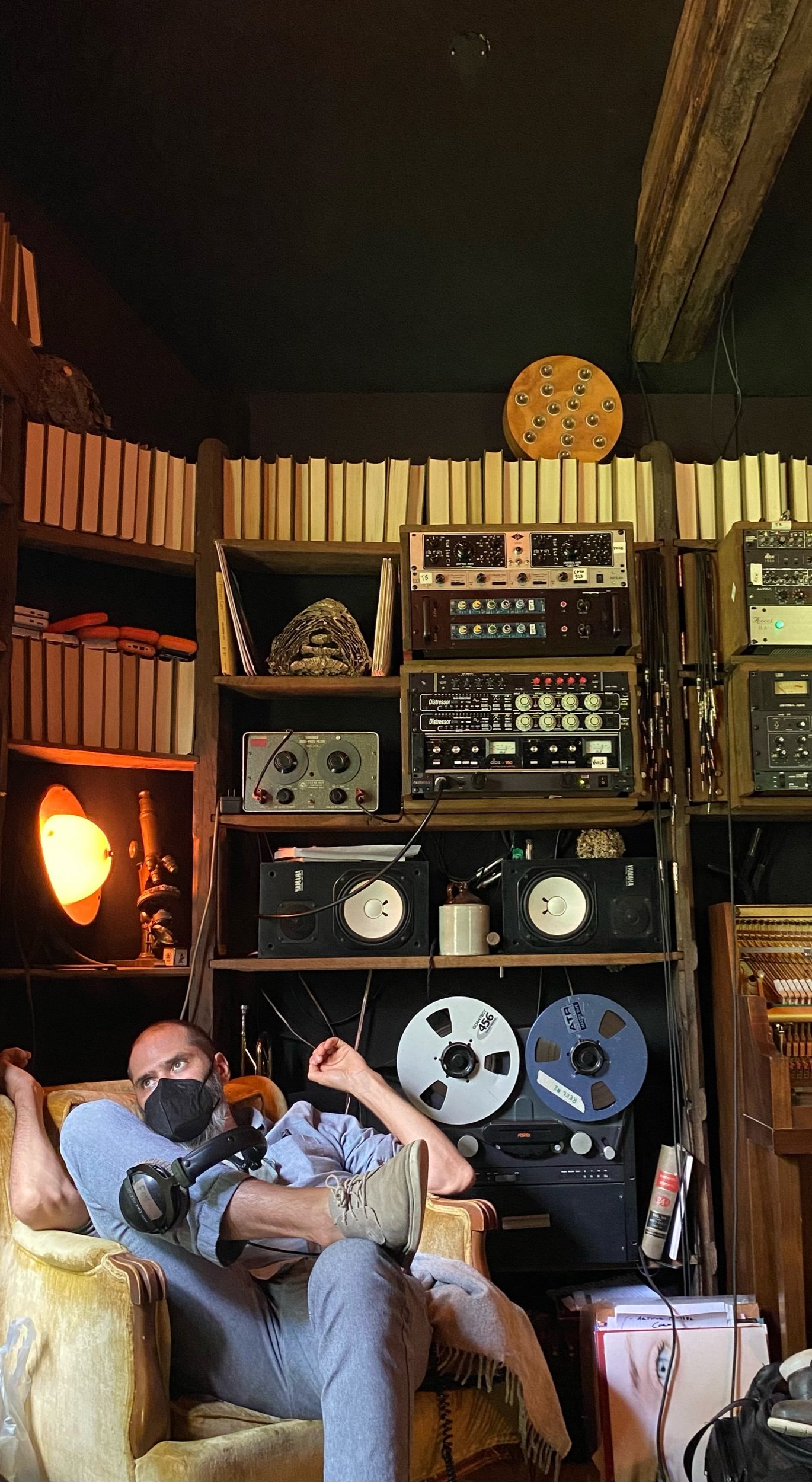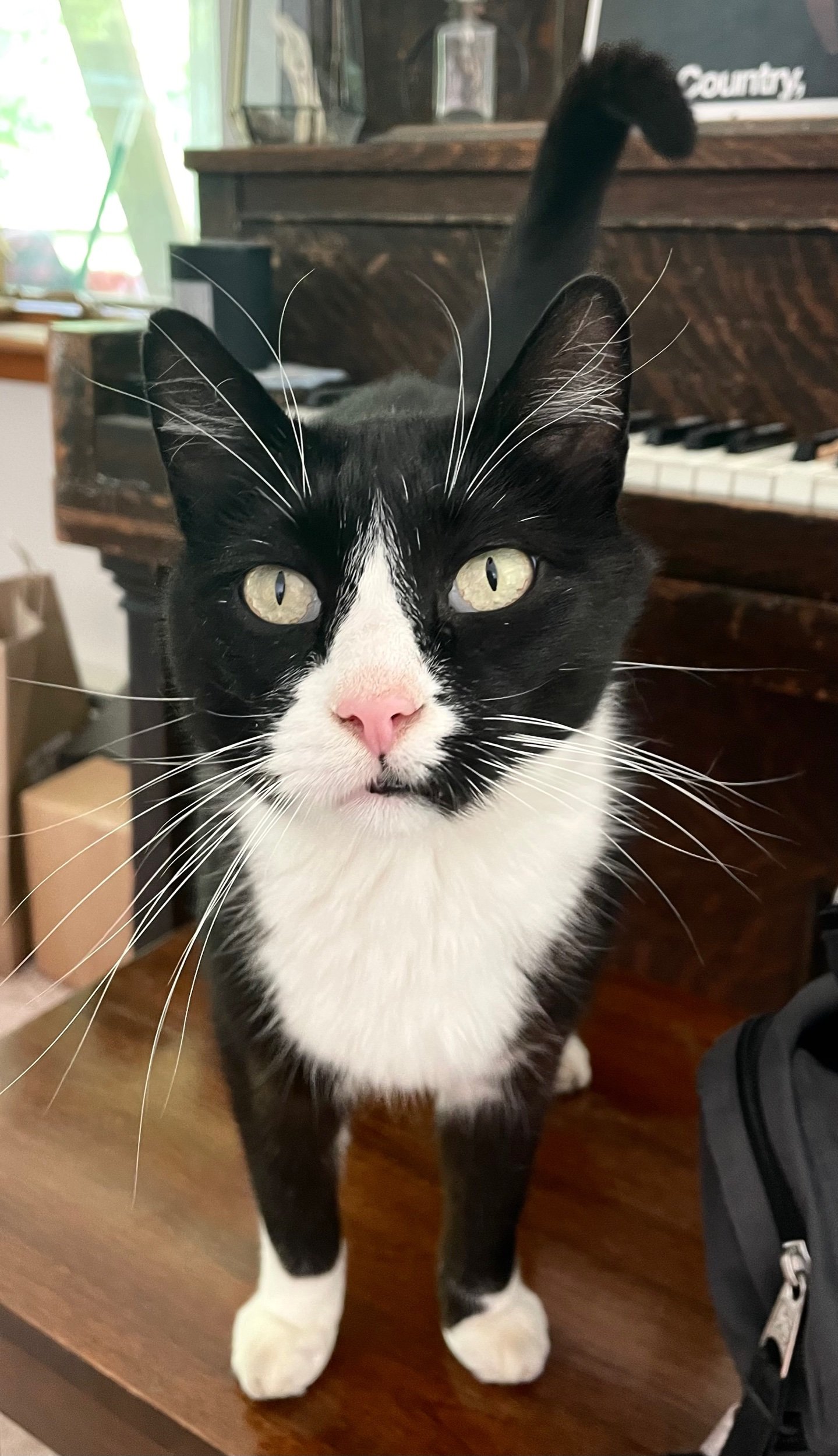Behind the Wallpaper was a staggering achievement in 2015, when Temple wrote it for Los Angeles-based avant-pop vocalist Julia Holter and Chicago’s Spektral Quartet. But on the long-awaited studio recording, released this month by New Amsterdam, the piece is transcendent. Thanks in part to the spectacular work of audio engineers William Brittelle (Roomful of Teeth) and Zach Hanson (Bon Iver), Temple’s 11-movement suite takes new life, particularly in the electronic layers unique to this recording. Here, Holter’s voice is expressively distorted and echoed, and the Spektrals’ strings are also occasionally processed. (The decision to render their jaunty waltz theme in “Masquerade” as a crackly phonograph recording was a stroke of genius.) It’s not quite classical, not quite pop, and not quite monodrama—but it’s all scintillating brilliance. Kudos to the production team for managing to bring still more dimension to the imaginative abandon of Temple’s dre
NPR All Songs Considered: The Best Releases Out on March 3
“I want to flag a new album from Spektral Quartet and Julia Holter, it’s called ‘Behind the Wallpaper.’
Spektral Quartet, a group from Chicago, and Julia Holter, a singer we’ve followed for a while now, together they’ve made this really lovely, transfixing album. It’s part ambient, part contemporary classical – very atmospheric – with Julia Holter’s voice at the center. Really gorgeous. Spektral Quartet and Julia Holter, the album – ‘Behind the Wallpaper.’”
–Robin Hilton
The Quietus: Julia Holter adds measured grace to a song cycle about personal transformation
REVIEW: Julia Holter adds measured grace to a song cycle about personal transformation
Composer Alex Temple’s Behind the Wallpaper is a dreamlike but modern work about change. Inspired by her own transition, she has created a narrative tale that is as bizarre as it is beautiful and realised it through collaborators Spektral Quartet and Julia Holter.
With the exception of a few found sounds and odd percussive details, Chicago string quartet Spektral Quartet provides the only instrumentation on the album. Behind the Wallpaper doesn’t follow set song structures, and the quartet’s contributions take on multi-dimensional characters in the work, from shuddering rhythms to playful pizzicatos to sharp, slicing dissonance. It is equal parts cinematic, romantic and terrifying, and essential to the world building around Temple’s story.
For as dense and vibrant as Spektral Quartet’s instrumentation can be, Behind the Wallpaper is not afraid to peel it all back and embrace minimalism, allowing for Holter’s voice to be accompanied by a single string instrument, for her to sing unaccompanied, and for soft, staticky silence to stretch out for seconds.
As an artist who has collaborated across many and varied genres, Holter is a perfect vocalist for the project. Her vocals are distinctive, instantly recognisable, and yet, as a convincing nod to the fact that she’s lending her voice to someone else’s story, more measured in their phrasing and inflections than she would be on her own work. Holter takes on the role of a narrator, relating the story of a ‘you’ main character, inviting the listener to envision their place in the vividly strange story. Even the winking outro of ‘Unnatural’ follows this course: ‘And you thought, “You make me feel like an unnatural woman.”’
The lyrics shift throughout the album from the surreal (whole fish pouring out of your mouth and the ocean flooding your living room) to the tangibly mundane (the people riding along on a bus). ‘Joline’, the album’s meandering standout, sets a scene of a fantasy horror film, featuring a mystical forest and a house producing new walls and exacting violence on its visitors. The song propels through different movements, tumbling from creaking wood to jaunty rhythms to a see-sawing dissonance. Reaching the end of the song feels like coming through the other side of something, but the emotion of having done so is more conflicted than concrete.
Behind the Wallpaper has the feeling of metamorphosis around it – something new and beautiful that emerges from a painful process. It is not to minimise Temple’s personal story to suggest that the theme will resonate broadly; the lyrics are abstract but will feel familiar to anyone who has made a difficult change in their lives. Indeed, it’s a suitable soundtrack for being unmoored.
–Amanda Farah
Alex Temple: "Blasted away by our bright unbearable reality"
Believe it or not, it's been more than ten years since an offhand tweet birthed the collaboration that would eventually result in this album. Cut to the fall of 2012: Spektral had recently asked me to write a short piece for them, and I was considering adding a vocal part that I would perform myself. Then one day Julia, who I'd been friends with since long before anyone had heard of either of us, happened to be playing Schuba's Tavern in Chicago. We met up for so-so Thai food, and I tweeted that I was hanging out with her for the first time in ages, because back then Twitter was still mainly for that sort of thing rather than hate speech and conspiracy theories. Doyle replied, half-jokingly suggesting that I ask her if she wanted to sing on my piece for the quartet. I did, and she did.
Sequenza 21: Julia Holter and Spektral Quartet record Alex Temple (CD Review)
Out this Friday, March 3rd, via New Amsterdam Records is composer Alex Temple’s cycle Behind the Wallpaper. Vocalist Julia Holter joins the Spektral Quartet in this song cycle inspired by Temple’s gender transition.
Holter, as always, is a marvel, with expressive, liquescent singing throughout her soprano voice’s range. The Spektral Quartet is given a variety of styles to play, from doleful lyricism reminiscent of Shostakovich’s string quartets to post-minimalism. The musical smorgasbord reminds me in places of Elvis Costello’s collaboration with the Brodsky Quartet, The Juliet Letters. Temple is fluent in marshaling these materials. Behind the Wallpaper deals with a significant event in Temple’s life, yet her touch is light and lyrics affirming. Recommended.
–Christian Carey
The "Why" of Behind the Wallpaper
Why are we putting out an artist statement? Especially when the story of Behind the Wallpaper stands - dreamily, fantastically, powerfully - on its own?
I wonder, have you noticed this particular dichotomy between the musical world and the visual art world? At concerts, a performer will often introduce a piece of music by sharing a tidbit about a composer, sandwiched between multiple iterations of “and we’re sharing it because it’s some of our favorite music to play.” So, let’s get that part out of the way.
(Cue applause) “This music is some of our favorite music to play!”
Night After Night: A Reflection by Theo Espy
The crackly, old-timey string flourish that begins “Night After Night” (Track 8) is one of my very favorite moments on the album. At this point in the piece the listener is deep within the twists and turns of Alex’s mysterious narrative, and has traversed so many sound worlds and stylistic shifts that reality has begun to blur...
Typically when we’ve approached recording music as a classical string quartet we have found ourselves striving for organicism in the recording/mixing/mastering process, and a natural quality in the “sound” of the recording. Basically, we endeavor to recreate the concert experience with as much fidelity as we can, while polishing some rough corners and creating a delicate balance within the mix that helps each part of the composition shine. For “Behind The Wallpaper” we decided to take a different tack - one that would stretch us, and which we hoped would serve the concepts behind Alex’s compositions and the storytelling of the song cycle. Leaving behind any attachment to “realism” opened many new doors, through which we were shepherded by our brilliant recording team: producer Bill Brittelle and audio engineer Zach Hanson. As we embarked on the mixing and editing process, we allowed ourselves to lean into a purposeful distortion or altering of the materials we came away from the recording studio with. The engineering of the album went from being a subtle and sublimated ‘tool’, to an instrument in its own right. Together with Zach, Bill and Alex we dove into experimenting with filtering, layering, and processing of our sound in a way that would help transport the listener immediately into distinct environments and draw on sonic associations to make that type of auditory teleportation as immediate and as arresting as possible.
Theo Espy in conversation with ‘Behind the Wallpaper’ cover art creator Cat Graffam
TE: Hey Cat! Thanks so much for taking the time to chat. To start us off, can you talk a little about your background and trajectory as an artist, and the process of arriving at your current artistic practice, style, etc?
CG: I arrived at being an artist at a tumultuous time at the end of highschool. I had a lot of trouble at school and home, so entering my senior year I had planned on either dropping out or committing suicide. It was then when I took an art class and my art teacher believed in me and made me apply to art school. Once I found a love for painting in college, I knew that it was going to be my purpose. Art saved my life. My major inspirations stylistically spawned from 20th century painters like Francis Bacon and Kathe Kollwitz. Since then it has evolved, devolved, and changed many times into a more intricate and calmer practice.
TE: Art is absolutely life-saving. I love the way you describe your inspirations both evolving and “devolving” over time - I have definitely witnessed myself experiencing similar patterns with musical influences I’ve had in my past as well. What’s your relationship to music, and does it ever intersect with your practice? Do you listen to music while working? Is this your first time creating artwork specifically to accompany a musical work?
CG: Music is maybe more influential for me than visual art now. Many of the titles of my pieces are bits from songs that I was thinking about or listening to when I created a particular painting. I have done some smaller-scope album covers for friends, but this is certainly the most serious of them!
Brooklyn Vegan: 26 New Songs Out Today
SPEKTRAL QUARTET - "NIGHT AFTER NIGHT" FT. JULIA HOLTER
Alex Temple composed Behind The Wallpaper, the new album from string ensemble Spektral Quartet, which features Julia Holter on most of its songs. The latest single is the beautifully orchestral "Night After Night."
Behind the Wallpaper Gets mixed
Hey there, friends, it’s been a minute.
Presenting our last Chicago show, rolling up the carpets in our studio, and gifting away our gear all feels very much like a goodbye. But the job is far from over. The part you haven’t seen is the flurry of work in preparing our final recordings for release next season.
We are currently deep in the mixing phase of Alex Temple’s Behind the Wallpaper, which we recorded with vocalist Julia Holter this spring at Electrical Audio in Chicago. For those of you that haven’t had the pleasure of staring at your pores under a microscope for days at a time (i.e. recording an album), mixing is the bit where we bump this or that voice into greater or lesser prominence, add effects to make us sound like we’re playing underwater or aboard an alien spacecraft, and/or decide on our proximity to your ears: tickling your brain, in another room altogether, or somewhere in between.
After our tour to Iceland, we drove up to beautiful Eau Claire, Wisconsin with Alex to meet our sonic necromancers: producer Bill Britelle (New Amsterdam Records) and mixing engineer Zach Hanson. Despite Theo and Doyle getting grounded with Covid, we managed to sprinkle magic fairy dust on all but a few of the 10 tracks, and we’ve been cracking on the rest from afar ever since.
We have to tell you, Behind the Wallpaper is going to be a very, very special record. It’s not a pop album nor a classical album. It’s an album that will seduce and disturb and surprise you at every turn.
Thanks to Alex’s keen eye and Clara’s quick shutter finger, we are able to give you a peek into this mixing process. Thank you for continuing to support one of the most consequential, musically adventurous records we’ve ever made!

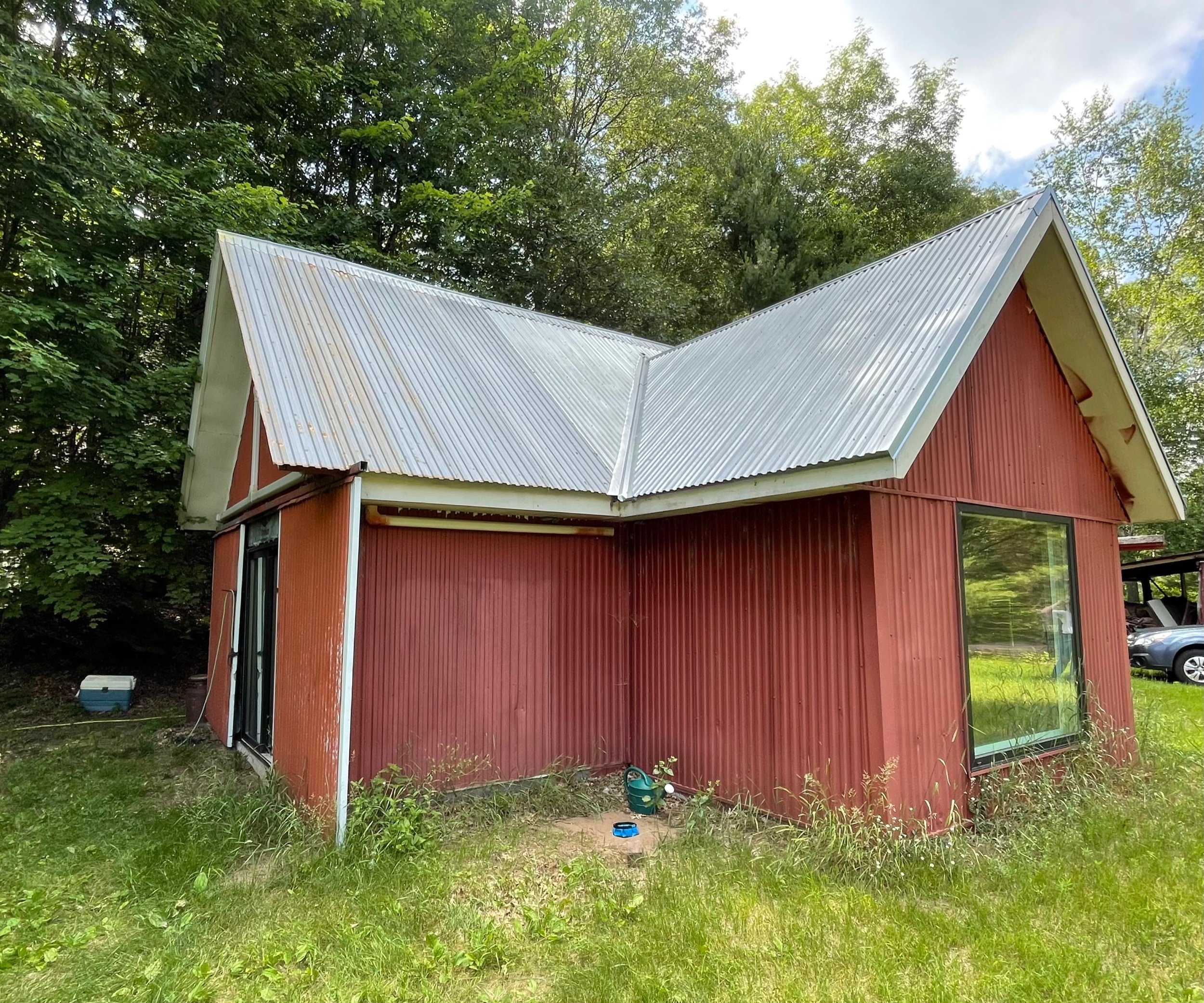
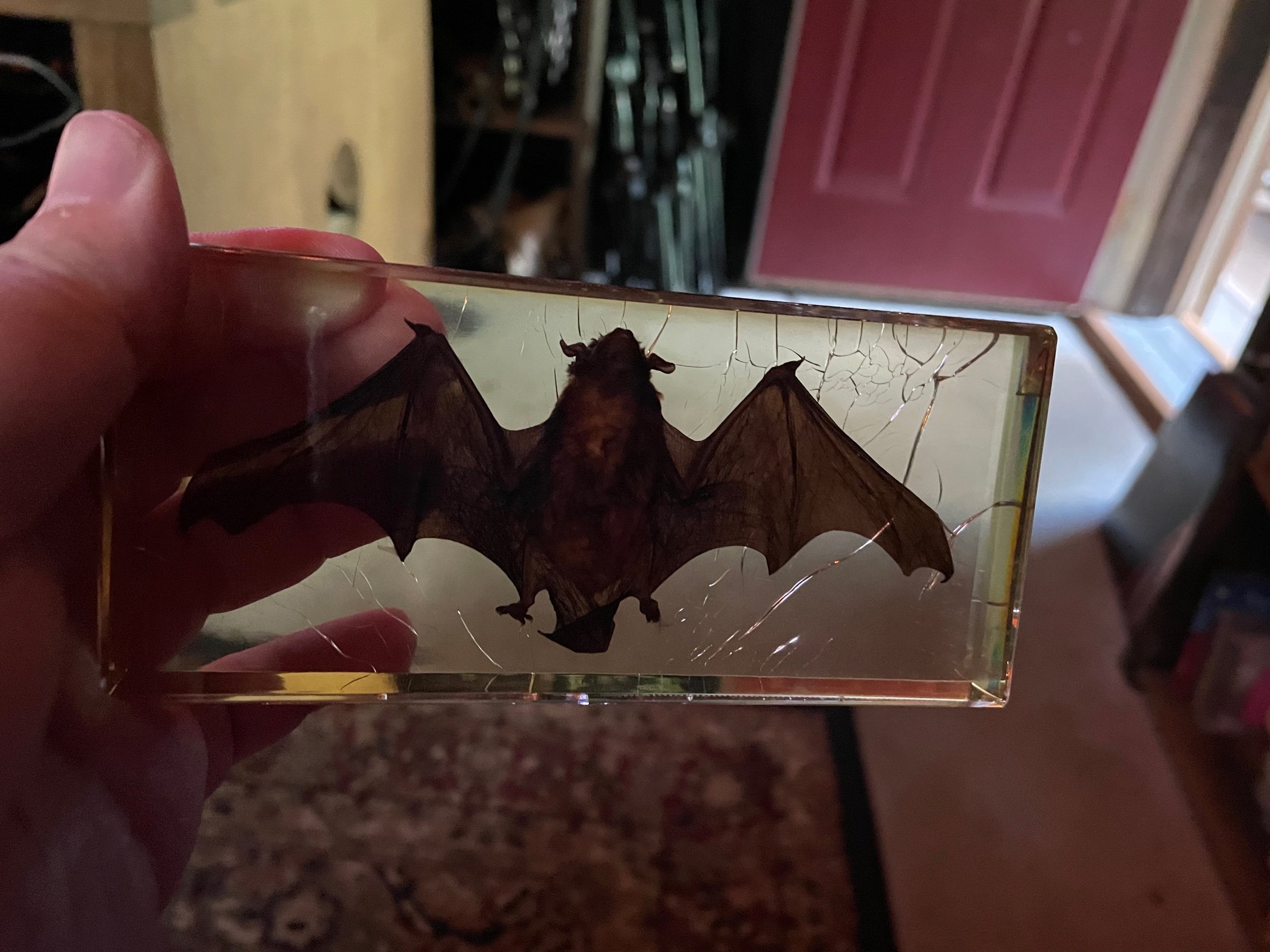
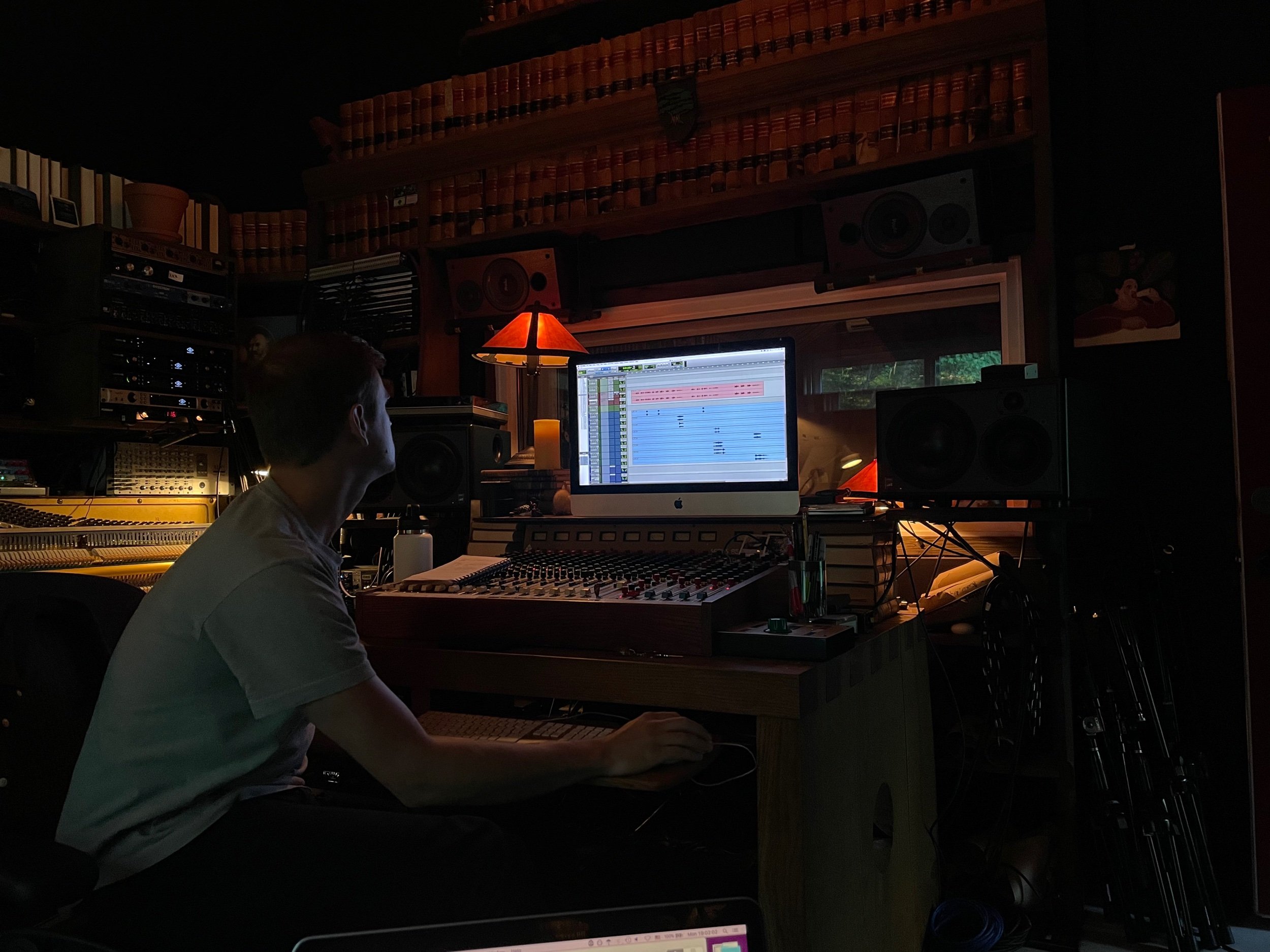
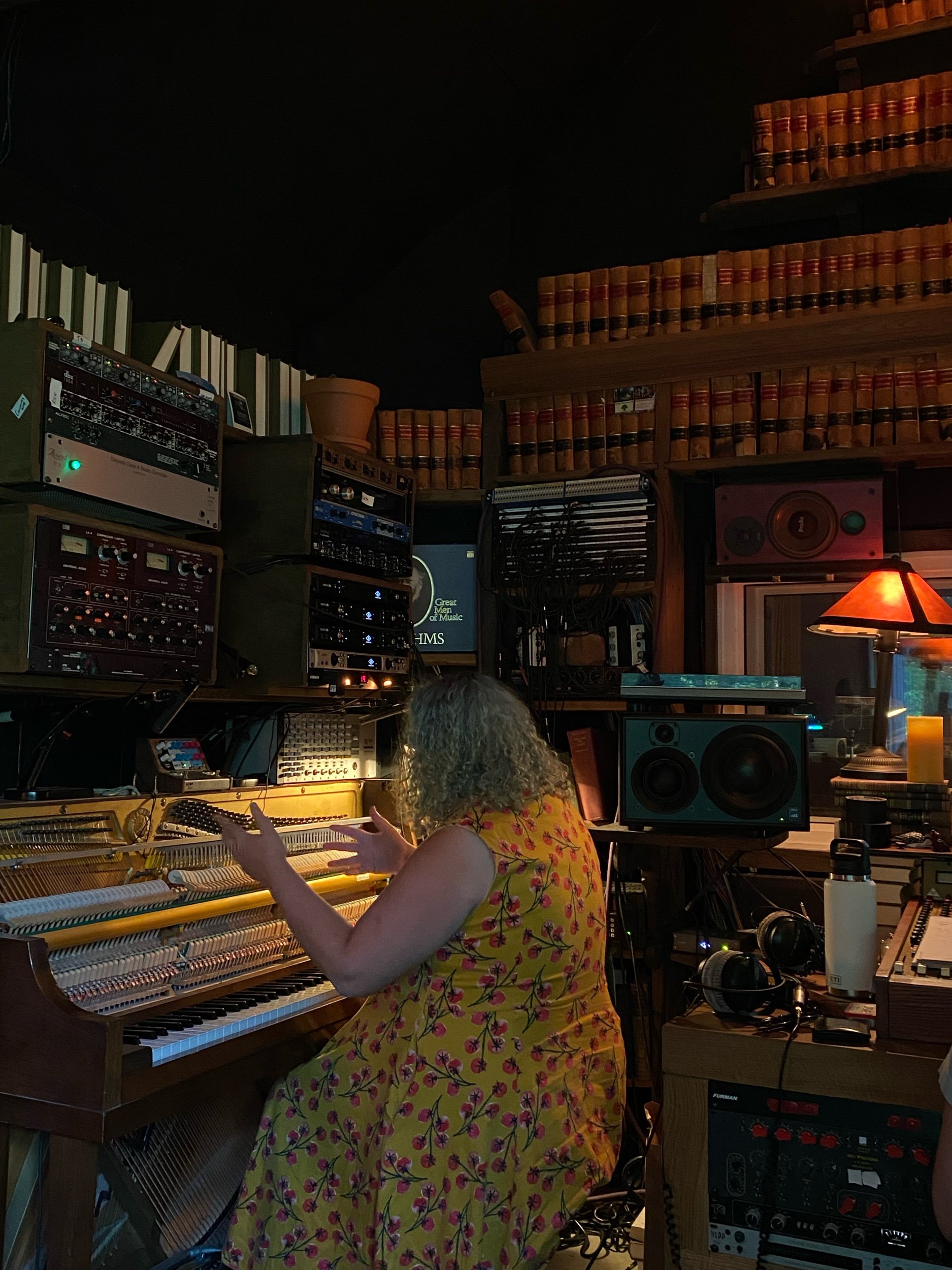
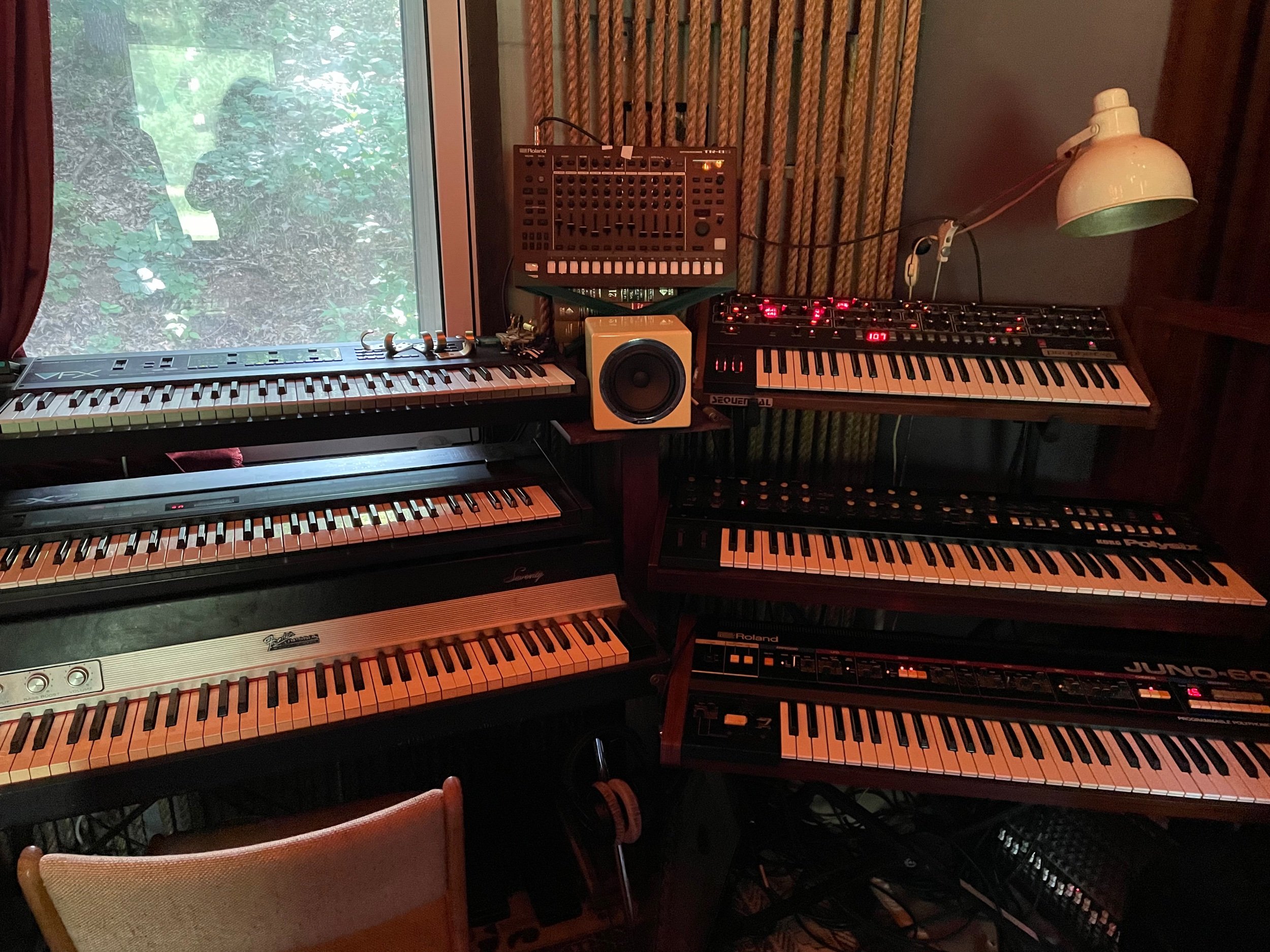

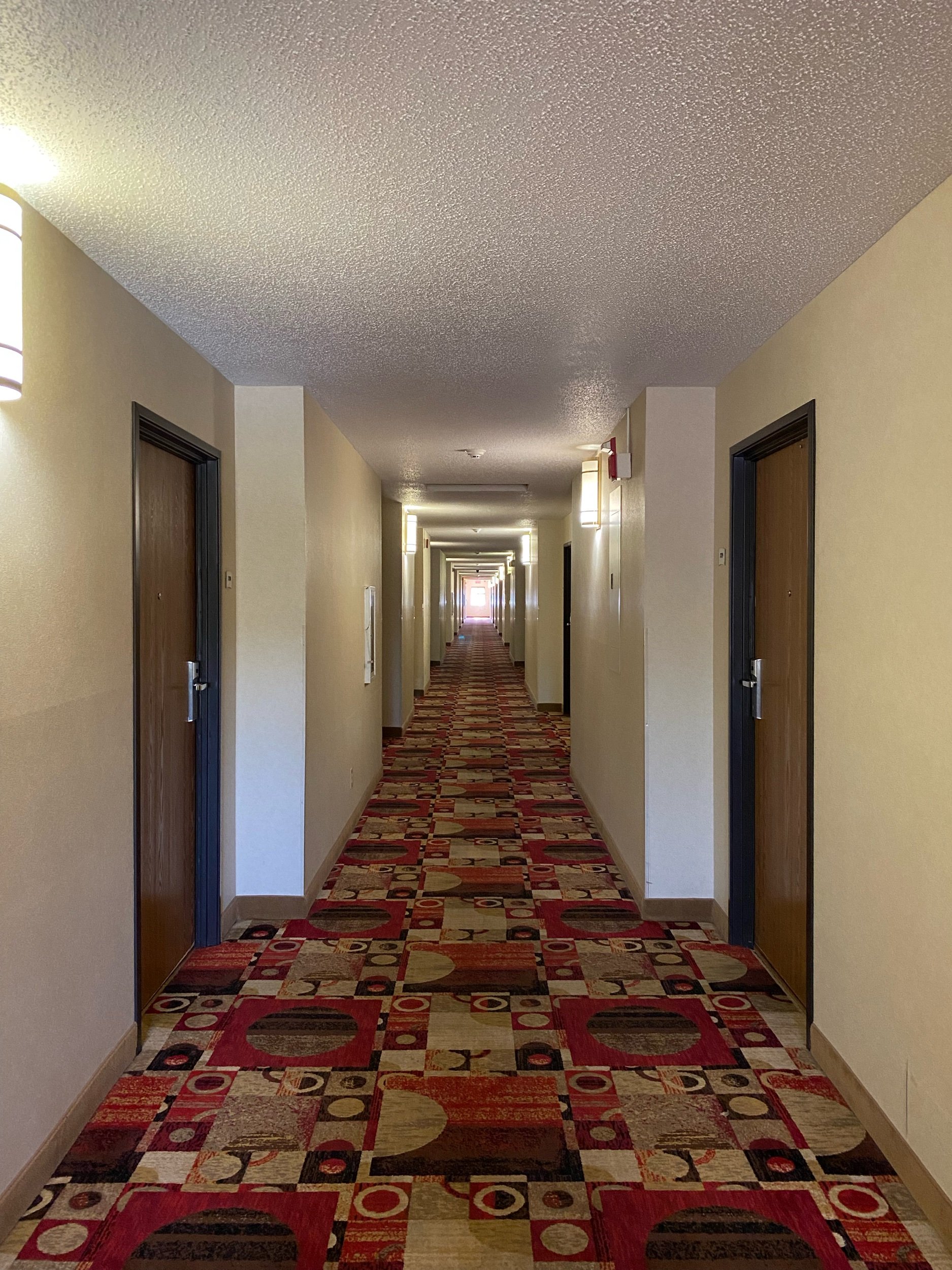
'Perhaps I was possessed by the film'–An Interview with Sir Lyra Hill
Six and a half years ago and I found myself on the set of Uzi’s Party, cooking lunch for the cast and crew. Although there was technically only one star in the film, the Roger’s Park home was crowded, everyone working diligently under the direction of friend and fellow School of the Art Institute of Chicago alum, Lyra Hill. To be honest, I volunteered for this to get in on Lyra’s magic.
Sir Lyra Hill is a force—their transition from filmmaker, to Master of Ceremonies, to comic artist, to performer, is entrancing and seemingly effortless. Their method is thoughtful and meticulous. Lyra is the kind of artist and organizer that we all admire, and I’m very excited to have had the chance to connect with them again over this serendipitous showing of Uzi’s Party.
Join us this Sunday (02/09) to catch Lyra’s film, Uzi’s Party, which has never before been shown on 16mm film – as Lyra says, “its true and best form” – in Chicago.
Alyssa Martinez: Your sister, Johanna co-wrote and starred in the film—what sparked the idea for the film and your collaboration with one another?
Lyra Hill: The technical challenge of the movie was actually my first inspiration. Then, the setting of a group of adolescent girls having a Ouija party. I experienced a pivotal, terrifying sleepover around age 12, where my friends and I lost our shit over (what seemed to be) Ouija possession. My sister was 19 when I wrote the film. I consulted heavily with her in developing the signature of each character. I saw her in my mind's eye when I imagined the film, and I knew I could trust her with such a grueling project. I never considered anyone else for the role.
AM: How did she prepare to embody each of these five different characters during filming?
LH: Months of discussion and play familiarized us both with the characters. And Jojo did amazing work in the short time before we started shooting. A lot came together in the week preceding production. I flew her out to Chicago and we collected all the costumes, wigs, accessories and color palettes of each character, with a lot of help from Marjorie Bailey and Jenna Caravello.
In order to film shots with dialog between visible characters, we had to pre-record the dialog at the pace we desired, so that we could be sure each character, filmed separately using multiple exposure, spoke at the right time. This technical necessity meant that Jojo and I stayed up late nights running through every scene. On set, I would listen to the recordings during takes and whisper the lines back to her to keep her in sync.
A while after filming was done, she told me that making Uzi's Party required her to pull her personality apart. Many people watch the film and don't realize that she plays every role. When she put herself back together, she said, it was in a new way with new knowledge. I am still in awe at how quickly she transformed, again and again, every day on set.
AM: All effects for Uzi's Party are done in camera – which is amazing. What were the reasons, both technically and thematically, for your decision to work this way?
LH: I love to do things that are almost impossible! Haha, it's true and it's very painful. I was heavily invested in optical printing and in-camera matting at the time, and I wanted to use my skills for a narrative picture about possession. Perhaps I was possessed by the film. I'd never filmed sync sound or written a script before. Once the task became clear, the world opened up to me. I dove into concepts of multiple selves and split personalities. The dark and spooky backdrop provided cover for the matte lines, where different takes overlap on screen. I knew, based on my limited resources, that it would be a scrappy, imperfect image, not slick like a studio production. I wanted to create the feeling that not only the story but the material itself might fall apart at any moment. I actually expected it to come out much stranger than it did. It casts a glamour!
AM: As a fellow alum of the School of the Art Institute of Chicago, I know from experience that the community really encourages students to work in different artistic disciplines—your work is especially interdisciplinary. Will you talk briefly about your experience at SAIC and how it shaped you?
LH: The fact that SAIC encouraged me to bounce around departments was life changing. I didn't have an easy time in school, but I did make a plethora of connections that blossomed into years of successful collaborations after school, and I had the freedom to wander down several paths I never expected. Some of those paths became big parts of my artistic identity. In my last year, I co-organized workshops and screenings for the Experimental Film Society, which turned out to be the first year of my still-growing career as an event organizer and emcee.
Good relations with staff and faculty at SAIC allowed me the resources I needed to shoot and finish Uzi's Party. They have incredible 16mm facilities. I spent hours and years after graduation borrowing equipment and sitting in editing rooms, cutting my negative. I could not have made this film without such strong support.
AM: When you moved to LA a few years back, you began the “ritual variety show,” MULTI CULT. Will you tell me about how performers participate in this show as well as what your role is as facilitator?
LH: Yes! MULTI CULT is the work of my life! I am putting everything I learned in Chicago and more into this project. There is a submission form for every show, it's always open and free to apply. Sometimes I reach out to artists as well. The event happens quarterly, and each show features 3-4 different performances after grounding, casting, intention and a sermon by yours truly. I am the host, curator, and producer. I have a great team. Because it's a group ritual where the audience participates in creating the magic, I also priestess the show, meaning I hold and conduct the proceedings as sacred. The title that says it all is Master of Ceremonies.
AM: Do you see this role at MULTI CULT as an evolution of your role at the performative comix series BRAIN FRAME (which I and so many Chicagoans loved), a totally different thing, or somewhere in between?
LH: I think about BRAIN FRAME a lot while I'm working on MULTI CULT. My role is very similar, but the content and the context for the show is different. Los Angeles is a different context than Chicago. A ritual variety show invites a lot more artistic diversity than a performative comix reading series. In a way, it's much more difficult because I'm constantly focusing on paradox and multiplicity, both of which are impossible to focus, by their very nature. I thought that BRAIN FRAME was difficult to describe while I was doing it, but I've really done it now.
AM: Ha! Anyone who’s had the pleasure of attending one of your events knows what an incredible host you are—you have a spellbinding way of engaging the audience. When you host, how do you become that person? Do you feel different within yourself when you’re hosting vs when you're not?
LH: Aww thank you!! Hosting comes naturally to me, not to understate how much I've practiced and studied to become better. I started out as the people-pleasing mediator in a volatile family, growing into an exhibitionist control freak in my spiritual community, and by the time I found myself hosting live events I was actually deeply shocked at how much I liked it, since I avoided performance in art school. Now I understand that when I am MC, I go to a raw place more true to myself than the version I'm playing in my day-to-day life. I channel the powers I generally repress in polite company.
AM: What are you working on now or what’s next?
LH: It's all MULTI CULT all the way! I have a show coming up in LA on the same night as this event, unfortunately, but I will be in Chicago at the end of February to perform at the fourth anniversary of Zine Not Dead! Which means I need to write a new comic this month. I've been releasing videos on YouTube: documentation of MULTI CULT as well as anarchist diatribes. I'm working towards sustaining myself with Patreon (patreon.com/multicult) so I can make all the things that are clamoring to be made inside my head and heart. MULTI CULT is a recurring show, but it's also an ethic, a framework, and a production foundation for an infinite variety of magical ideas. It's the only container that can hold me.
'The Thing that makes being an artist worthwhile'–An interview with Alex Temple
Doyle Armbrust: Behind the Wallpaper is one of my all-time favorite Spektral commissions...we're so happy to be bringing this piece back to Chicago with you and Julia!
Alex Temple: Thanks! I'm really excited!
DA: Do you remember what you were consumed with, creatively, around the time you wrote it?
AT: I remember thinking a lot about the aesthetics of emotional repression — about things left half-spoken and strong statements delivered quietly. There's plenty of that in Behind the Wallpaper. I also remember being frustrated with cultural declinism and the way people idealize the past. Admittedly, it's a lot easier to feel like things are declining now, in an era of resurgent nationalism and authoritarianism. But at the time, it was important to me that the piece end with a suggestion that things will be better in the future.
NYTimes: Julia Holter and the Spektral Quartet in the Ecstatic Music Festival
“First it was brusque, then eerie and sly. Julia Holter and the Spektral Quartet shared the Ecstatic Music Festival concert on Wednesday night at Merkin Concert Hall in a program that lingered in the cloudy zone where contemporary composition meets the pop song. In its sources and allusions, the concert took for granted the broad-spectrum musical erudition of current composers: hip-hop, medieval motets, Broadway, Impressionism, dubstep…
Ms. Holter and the quartet also performed Alex Temple’s song cycle “Behind the Wallpaper,” which, Ms. Temple has said, includes Ms. Holter’s music among its inspirations. The lyrics of the brief songs in “Behind the Wallpaper” sketch surreal transformations and spooky situations: a character who has been swallowing seawater and live fish, another wandering a house where the walls keep shifting. The songs were atmospheric with ambiguous tonality, drawing chuckles along with hushed curiosity. They quivered, hovered, paused and slipped in and out of ghostly waltzes before the last one, “Spires,” resolved into the sweet major chords of an old movie score’s happy ending, followed by the sound of rising waves — a flood, perhaps, drowning all the strangeness.”
Village Voice: Julia Holter and Spektral Quartet Embrace the Surreal for Ecstatic Music Festival
“Both the title and subject matter seemed to reference Charlotte Perkins Gilman’s feminist classic “The Yellow Wallpaper.” Though Temple’s character is not confined to one room, her odd visions signify the same descent into psychosis brought on by a life of mendacity. Holter’s exaggerated, elongated syllables and measured, bouncy tempo were more reminiscent of Björk’s timbre than Holter’s often more ethereal overtones. But the feeling of disorientation and displacement is one that Holter has previously examined, most notably on her 2013 LP, Loud City Song. ThoughLoud City takes an approach based more deeply in reality, “Behind the Wallpaper” felt like an exploration of a different side of the same spinning coin, a dizzying collage of dreamlike impressions cleverly obscuring a straightforward narrative.
While at times it was difficult to get a firm grasp on “Wallpaper,” there was also a sense that Temple wanted it that way — somewhere between avant-garde composition, mysterious artifact, and sci-fi thriller. Even at a time when genre tends to blur and bend, it’s still rare to see performances as unique and risky as this, and the combo of Holter’s bewitching vocal delivery and Spektral Quartet’s spirited strings provided an especially stirring showcase for the work. We have Ecstatic Music Festival to thank for that, at least in part. With upcoming pairings from ETHEL with Kaki King and John King, Xiu Xiu with Mantra Percussion, an 80th birthday celebration for Terry Riley, and a handful of others, there’s no shortage of distinctive, idiosyncratic events to give music fans plenty to feel ecstatic about.”
Chicago Tribune: Alex Temple's Voice Comes Alive
“For "Behind the Wallpaper," Temple preferred a sympathetic vocalist with a subtle delivery, which is why she wanted Holter's unadorned mezzo-soprano rather than a dramatic opera-trained singer. The score seems sparse, but there are unusual twists to its underlying harmonic language. Different meanings can also be read into the imaginative story, which connects to Temple's own transgender experience.
"Being a trans person and going through reconfiguring aspects of my social presentation, appearance and (the) way I conceive of myself has made me very aware of the artifice involved in how people represent themselves visually and bodily," Temple said. "A lot of queer art is too heavy-handed or self-aggrandizing. I wanted to deal with it more obliquely."
Armbrust added that as a nonconformist classical musician, he can identify with some of that perspective.
"What Alex is trying to get at is (that) going through something so transformational may put you outside of society," Armbrust said. "But you don't end up just by yourself."“
